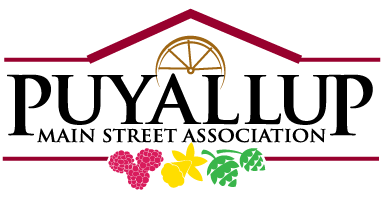History
In 1833 when the first European, Dr. Tolmie, passed through our valley, the Puyallup was a broad, meandering river chocked with massive log jams and subject to frequent floods. The valley floor was a maze of creeks, old growth forest and ferns growing to eight feet high. The forest in our valley was so dense that in 1878, six months after the Kopfer family took up their homestead on the south hill, they discovered that, unbeknownst to them, during those months they had been living almost within hailing distance of the booming community of Puyallup, established 25 years earlier.
Early Settlers
The first white settlers were part of the first wagon train to cross the Cascades at Natches Pass in 1853. During the Native American War of 1855-56, following the signing of the controversial Medicine Creek Treaty, many of these settlers fled to Fort Steilacoom for protection. The only structure spared was the cabin of Willis and Maryann Boatman whose son, John William, was the first white child born in the Valley.
Sometime in 1862, Jeremiah Stilley sold his squatter claim to Ezra Meeker, who had rejected the Valley as a place to live nearly 10 years before. Ezra and Oliver Meeker had joined with their father, Jacob, in a mercantile venture in Steilacoom during the Indian Uprising. He convinced his brother, Ezra Meeker, to take another look at the valley he had rejected 10 years earlier.
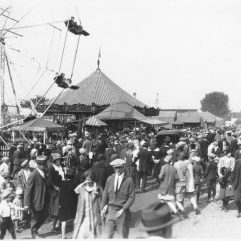
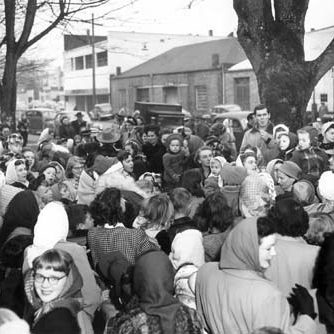
Hop Industry
After the Civil War, Charles Wood of Olympia, who operated a brewery, brought hops from England and sent some to Jacob Meeker. The first harvest brought in $185. Shortly afterwards everyone wanted to plant hops. By 1884, over 100 farmers were growing hops. When family labor was not enough to bring in the harvest, Native Americans from as far away as British Columbia came to work. When these were not enough, Chinese workers came to help. The harvest was 3,000 pounds per acre. Ezra Meeker formed his own hop brokerage business and became known as the “Hop King of the World”. Hop lice appeared in 1891. Despite efforts to kill the lice, the hop boom was over in less than a year.
Early Education
In 1861, the first school was established in the blockhouse officially named Fort Maloney, but better known as Fort Carson because John and Emma Carson were using it as a home. Mrs. Carson was the teacher. She had six students. In 1862 a real school was established on land donated by J. P. Stewart. In 1874 a growing population needed a new school building. This was also built on Stewart land. By 1886, this school had been outgrown and the Central School was built. Today the Puyallup School District has 31 schools, 1,255 teachers, and 19,795 students.
Incorporation of a City - Downtown Puyallup
During the prosperity of the hop years, Ezra Meeker platted a town on 20 acres of his land, giving it the name Puyallup. J.P. Stewart immediately followed with three 20-acre plats north of Meeker’s plat. Additional plats by Meeker and others doubled the size of the town by 1888. The “corporation” of Puyallup was formed. The first ordinance dealt with the licensing of “drinking shops”. The corporation acquired land, laid out new streets, built wooden sidewalks, and generally acted like a real town council. However, in February 1890, after Washington Territory became a state, the Supreme Court of Washington declared the corporation of Puyallup illegal. An election held on August 16, 1890, approved the proposition for incorporation under the new state laws. Three days later the county commissioners filed the order of incorporation with the Secretary of State and the City of Puyallup became official.
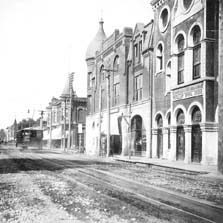
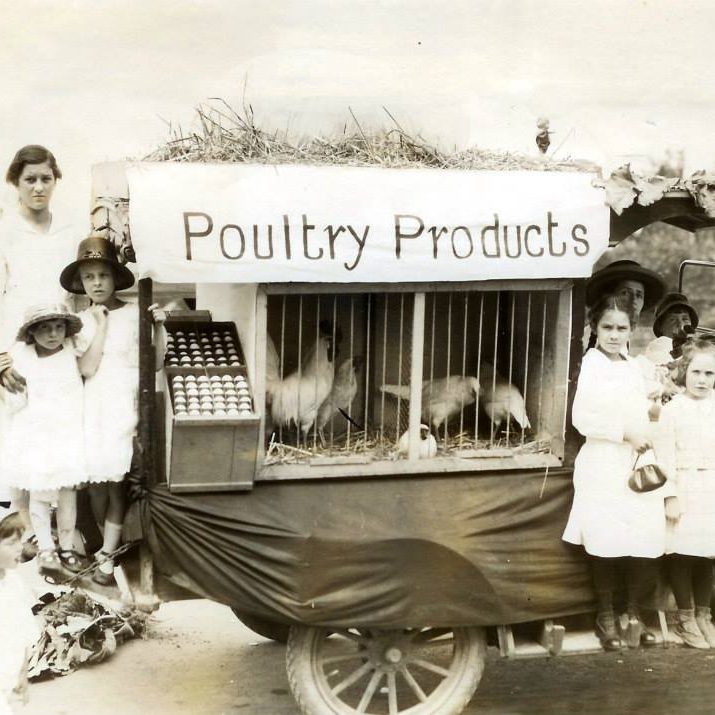
Berry Pickers
The economy of the Valley suffered after the hop lice disaster and the worldwide economic depression of the 1890s. In place of hops, Valley farmers planted blackberries and raspberries. Eventually the Puyallup and Sumner Fruit Growers Association was formed, canneries were built, and thousands of pounds of fruit were shipped across the country and around the world. Dairy farms, poultry farmers, lumber mills, and daffodil farms also contributed to Puyallup’s economy.
Today, no longer an agrarian community, Puyallup still reflects its agricultural roots with the annual Western Washington Fair, one of the top 10 fairs in the world, and the Daffodil Festival with its floral parade held each year in April.
*Excerpts. More information can be found at http://www.sos.wa.gov/history/cities_detail.aspx?i=9

